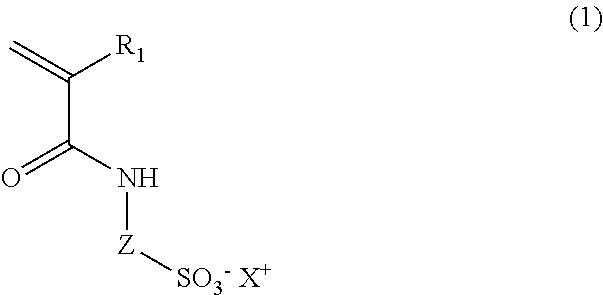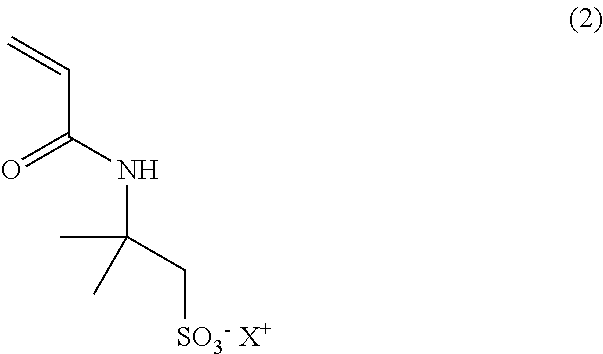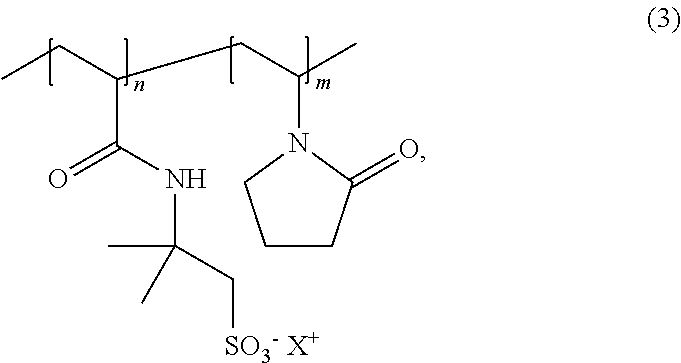Foam Formulations Containing at Least One Triterpenoid
a technology of triterpenoids and foam formulations, which is applied in the direction of aerosol delivery, inorganic non-active ingredients, drug compositions, etc., can solve the problems of loss of natural barrier substances of the skin, increased roughness, and increased roughness, and achieves good skin compatibility, compatibility and user-friendliness are advantageously combined, and the effect of pleasing applicability
- Summary
- Abstract
- Description
- Claims
- Application Information
AI Technical Summary
Benefits of technology
Problems solved by technology
Method used
Image
Examples
embodiment 1
2. Foam formulation , wherein the at least one triterpenoid has a solubility in water of less than 0.5% (w / w), preferably less than 0.1% (w / w), particularly preferred less than 0.05% (w / w), more particularly preferred less than 0.01% (w / w).
3. Foam formulation according to embodiment 1 or 2, wherein the at least one triterpenoid has a solubility in water of less than 1 μg / ml, preferably less than 0.75 μg / ml, particularly preferred less than 0.5 μg / ml, more particularly preferred less than 0.2 μg / ml.
4. Foam formulation according to any one of the preceding embodiments, wherein the at least one triterpenoid has a solubility in vegetable oil, preferably in refined sunflower oil, of less than 50 mg / ml, preferably less than 20 mg / ml, particularly preferred less than 10 mg / ml, more particularly preferred less than 8 mg / ml or less than 5 mg / ml.
5. Foam formulation according to any one of the preceding embodiments, wherein the at least one triterpenoid is at least partially or substantially p...
embodiment 26
27. Foam formulation or emulsion , wherein the triglyceride comprises caprylic acid / capric acid triglyceride.
28. Foam formulation or emulsion according to embodiment 26 or 27, wherein the lipid further comprises a phospholipid, preferably lecithin.
embodiment 28
29. Foam formulation or emulsion , wherein the lecithin comprises a hydrogenated lecithin.
30. Foam formulation or emulsion according to any one of embodiments 19 to 29, wherein the membrane-forming substance is water insoluble.
31. Foam formulation or emulsion according to any one of embodiments 19 to 30, wherein the membrane-forming substance has a HLB-value of more than 8, preferably between 9 to 11, more preferably between 9.5 to 10.5.
32. Foam formulation or emulsion according to any one of the preceding embodiments, wherein the emulsion further comprises at least one surface active, ionic polymer with a molecular weight of more than 5000 g / mol, wherein the ionic polymer is a copolymer comprising as monomer units
[0242]an ionic monomer (M1), and
[0243]at least one further monomer.
PUM
| Property | Measurement | Unit |
|---|---|---|
| solubility | aaaaa | aaaaa |
| solubility | aaaaa | aaaaa |
| solubility | aaaaa | aaaaa |
Abstract
Description
Claims
Application Information
 Login to View More
Login to View More - R&D
- Intellectual Property
- Life Sciences
- Materials
- Tech Scout
- Unparalleled Data Quality
- Higher Quality Content
- 60% Fewer Hallucinations
Browse by: Latest US Patents, China's latest patents, Technical Efficacy Thesaurus, Application Domain, Technology Topic, Popular Technical Reports.
© 2025 PatSnap. All rights reserved.Legal|Privacy policy|Modern Slavery Act Transparency Statement|Sitemap|About US| Contact US: help@patsnap.com



